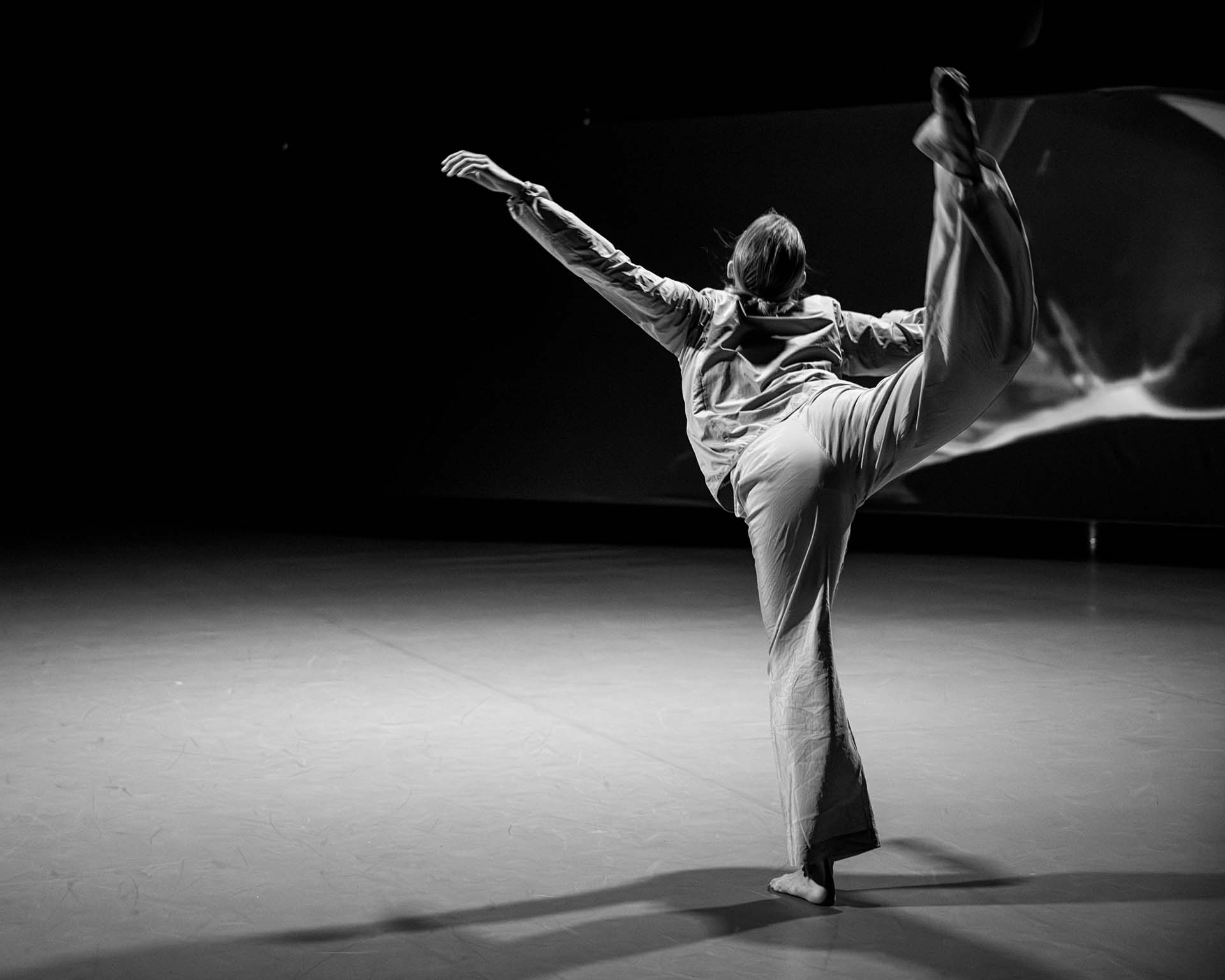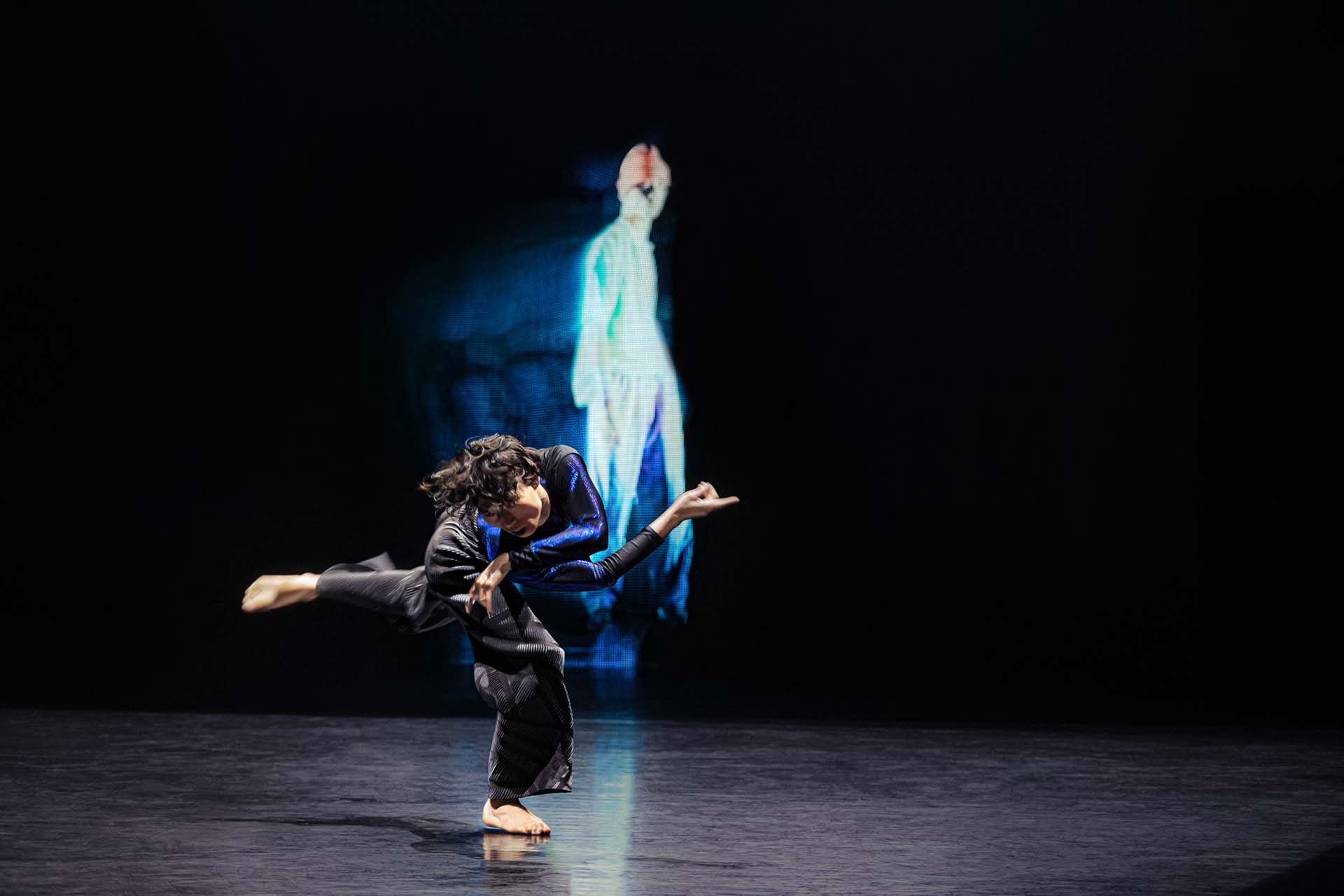

«In an age where technology allow to see events on the other side of our planet playing out in real time and graphic detail, we are challenged, as at no other time in history to question where our humanity lies and to access it through a deeper connection with our own embodied state?».Wayne McGregor about his Dance Biennale.
Live shows blend with the most innovative technology, always, and dance is no exception. This is not new: we remember Merce Cunningham with his Biped (1999), a show that used motion capture to make dancers and holograms interact. Here in Venice, nobody but Wayne McGregor, the director of the Venice Dance Biennale, could manage the challenge of this clash of languages. With his company Random Dance (today the Wayne McGregor Company), McGregor is undoubtedly one of the most acclaimed choreographers in the world. With this edition of the Dance Biennale, he will show how body and mind can influence one another and how this relationship can be severed, thus generating non-habitual motion. We are looking forward to his upcoming book, Thinking with the Body.
You have been running the Biennale for four years now. I would like to ask you what your best achievements are and, if any, what you would consider your failures.
Well, if we want to start with successes, that would be turning Biennale Danza into a commissioning machine, so that what the Biennale will be able to do is investing in artists’ work, and not just bringing it to Venice. What we are doing is trying to invest at all levels of work, so both on young artists and on artists who have more experience, and become a co-commissioning partner. I think that will change, and has changed already, the way artists see the Dance Biennale. I get into a lot of really interesting conversations with people who tell me they would love to come, and at the same time, how they are finally able to arm and produce work that wouldn’t be made otherwise. That’s one of the achievements. The other great achievement for me is about the Biennale College. What happens to those young artists after they leave? Well, they obviously feel very armed with a new sense of confidence to do lots of extraordinary things in their new lives. We keep in contact with all alumni of the College, we hear what they’re doing, we see the shows they’re doing. It’s really amazing. They become your community – your extended community – and they go see each other’s shows. I have two dancers from the College in my company now, and I think that intense nurturing that only a place like the Biennale can do is really extraordinary.
Now, about failures, I would say that perhaps it’s not really a failure, but how can we use a model like that, which is about nursing, nurturing artistic practice over a long time? I mean with professional artists as well, what will we be able to do with more resources? Maybe a kind of choreographic laboratory that is open year-round? How can we work with artists that are not just here for three weeks for the summer, for the Festival, but extend the scope of that work so it has much more of a critical, elemental, positive impact? A lot of those young Italian makers are not getting resources and they are not getting helped to create and sustain a practice and get traction, even internationally. That’s an aspiration, more than a failure, but it’s something that I think would be really amazing.

This might be true or not – I am writing a book on these last 10 years of the Dance Biennale. A chapter will start with “Wayne McGregor, the Director of the Venice Dance Biennale”. How would I go about explaining who you are?
It’s always a challenge when you ask an artist to be a director of a festival, because one imagines that you will only programme or think about work that is related to your own, though one of the things I tried to do is I’ve kept my personal work to the minimum in the context of the festival. I tried to look wide and to… perhaps think about some of my values in relation to a philosophical understanding of dance or an extension of understanding about what dance can be or dance’s impact on the world, and do all of this through the lens of other artists’ practice. I worked to bring to Venice people whom we would never expect to see here. We are making the Biennale grow from within, from its heart.
Another aspect that is perhaps a little less visible is about the relationships between the artists themselves, making opportunities to get to know them and get them to know us. My starting point was a bit different: I didn’t approach this merely as a professional duty, I found myself genuinely curious about other artists’ creations, which I see as a way to encourage them to keep at it. We don’t have to be in competition with others. In fact, we can support one another. Each of us has their own way of working, but we can respect each other’s reasons, too. The value and the importance of each work reflects when confronted with other interesting art. The final thing I’d say is that hopefully dialogue between the works that I have brought will help audiences reframe what’s possible in dance, and for them to understand that dance is forever evolving and extended. That would be the hope. But you’ll be writing it, so it will be your version.
I’d say is that hopefully dialogue between the works that I have brought will help audiences reframe what’s possible in dance, and for them to understand that dance is forever evolving and extended. That would be the hope
Cristina Caprioli, the Golden Lion for Lifetime Achievement award at the 2024 Venice Dance Biennale, produced in 2012 a symposium, Weaving Politics, on the relationship between choreography, human rights, and violence. The meeting had international outreach and shocked the world of dance. Is it still possible to do such a thing at the Dance Biennale?
Absolutely. Cristina carried on with her practice whatever happened, and she always interfaced the political and the Political, as it were. She’s done that through very reflective work, which is not always entertaining. She’s not interested in the entertainment aspect of the world, and I really respect that. I think that the political dimension and incisiveness and the convening that she’s able to do with her interventions is something that is really wonderful. We’re going to talk. We’ll talk about what we can do here in Venice, about what there’s going to be within that world. But yes, she’s an incredible intellectual and provocateur.
I was surprised when I read a comment by Christina saying choreographers were more and more used to organise their performances on their shows to go on with what the public wants. We do have to stay in the market, but I’d never thought about it. What do you think, is this dangerous?
I think it’s getting worse for artists because resources are tight and many commissioning partners ask artists to make the hits that they made last year or alternatively, they’ll wonder, well, what will our audience like? It can’t be too intellectual. It can’t be too rigorous. It’s got to look a certain way. There’s a kind of a cultural censorship around commissioning already, which is problematic. I think what Cristina is saying is that our work is not about entertaining the public. When you work with rigour and a kind of a purpose which is beyond pleasing, that’s actually much more challenging to make. I think Cristina had that in her own career: occasionally, that kind of tenacity and rigour in the work has often been overlooked for some of the bigger commissions that one would have thought she would have been doing just in case the risk is higher, right? I think there is a danger that everything becomes too much of an entertainment piece or too shiny, and that actually the rigour of dancemaking and the intellectualism of dancemaking is subsumed by things that are much easier to like. And I think that’s on all of us. It’s a critic’s responsibility, an artist’s responsibility, a commissioner’s responsibility to make sure that we’re balancing these really beautiful things that are shiny and that are entertaining – they are a quick and open hit, and that’s great, I love those. But balance that on a continuum where there’s something you’ve got to really work hard to understand, where you really have to dive into that artist’s work to understand how they are changing the paradigm, because it’s only in the changing of the paradigms that the work is going to evolve. Our work in dance is going to evolve and then our evolution of thinking generally is going to evolve and that’s really important.

Just out of curiosity, I counted how many companies staged shows on Maria Callas this year. I counted eleven so far, and that’s only Italian companies. If artworks are reproduced infinitely, are we going to lose the aura, the imagination? I think dance can avoid this, because you don’t are never looking at the very same piece one evening and the next, it changes every time. Is this why the public tends to like dance more than other forms of art?
I think it’s very hard to fake dance. You can get fake news or fake theatre, but fake dance? It’s very hard, because you are sitting in the theatre with somebody right in front of you who has to deliver the essence of them in real time, it’s a very direct transmission. I like the idea that dance can’t be replaced like that. The other thing that strikes me is the spontaneity of performers, their ability to decide in real time. How do we capture that? This is a pivotal question for the future. How do you capture Cristina Caprioli now? We see her as a maker who is making decisions in real time. We are not looking at a video. How does she do that? There’s a really interesting role for new technology to play in capturing the essence of someone. And that might be an AI system that goes beyond just the shape of the performer, but what else is going on when somebody is dancing or performing or choreographing that makes them you? their youness, your youness? What is that? When you go watch incredible dancers, even if we know the dancer very well, we always see a refracted version of them. We never see the same version of them, just like in life, even with your partner or your best friends, you never see the same version of them. Sure, there are habits and things that are similar, but the actual transmission is never the same, and I think on a deep level we respond to that. I think we really do because again, truthfulness comes that way. It’s very hard to hide and it happens in a similar fashion in the political dimension: being in a room with someone is very different than talking over zoom or convening through e-mail or doing it remotely. Live presence, whether that is in mediation or in live, watch-in theatre, or even in healthcare, for example, is really, really important because there’s so much of the otherness of you that you can’t transmit in any of these other forms, and it’s those things that allow us to build empathy with someone. If you’re building empathy, it helps shift your mindset, and that’s the power of dance, though really, the power of any form of bodily communication.
If you’re building empathy, it helps shift your mindset, and that’s the power of dance, though really, the power of any form of bodily communication
We see newer and newer forms of visual culture: Berger, Freedberg, Perconte, Pierre Huyghe is now on exhibition at Punta della Dogana. How did these studies influence dance, and where do we get to see it in the 2024 Venice Dance Biennale? Can the interaction between dance and technology generate new forms of expression?
Well, again, there are different knowledge sets that cross over. This year, Cloud Gate as well as Nicole Seiler will stage artificial intelligence-enhanced live performances. Another example, thanks to Véréna Paravel and Lucien Castaing-Tayolr and their epic documentary De Humani Corporis Fabrica, we shall find ourselves sitting before a seven-screen video installation. While looking at the inside of others, you can’t help but be moved by the materiality of your own body, the fragility of your own body, those organs moving the spaces inside this body that we all share, this matter that we all share. What’s interesting about technology is that it shines a light on parts of the body that we could never see otherwise, and it moves our imagination into a new dimension. You know, creativity is very technological. I’m curious about where technology interfaces as a tool with creativity, not to replace the human touch or the human hand of the human creation, but to amplify it or augment it, or to challenge it in a different way. I chose things in this festival that I hope will take us towards truth, not towards fake, but I do wonder: do we recognise fake at all? I once built this show in London with ABBA – with avatars, they’re not real. They’re not the real ABBA. When people go there, it’s just like dancing around zeros and ones. People, though, believe that is ABBA. They believe that there’s an empathetic connection with the technology, the same technology that many said cannot do empathetic connection at all. There’s a world where we can work in an interesting way with technology to create essential human phenomena, and that’s not generative music or generative dancing. It’s about something else. It’s about that specialness again.